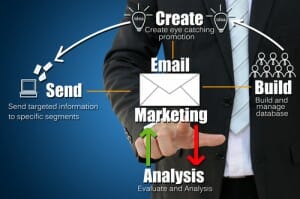Thursday is guest post day here at Duct Tape Marketing and today’s guest is Willie Pena – Enjoy!
 The open rate for transactional emails far exceeds that of any other type of email, whether it is newsletters or bulk marketing mail. Once just a sparse, utilitarian messaging that conveyed the bare bones details of a business transaction, transactional emails are now multi-purpose missiles that impact a company’s reputation, revenue, research and audience retention. They do this without being intrusive or unwanted.
The open rate for transactional emails far exceeds that of any other type of email, whether it is newsletters or bulk marketing mail. Once just a sparse, utilitarian messaging that conveyed the bare bones details of a business transaction, transactional emails are now multi-purpose missiles that impact a company’s reputation, revenue, research and audience retention. They do this without being intrusive or unwanted.
The most effective and profitable transactional emails include shipping confirmations, order confirmations and approvals for return of merchandise (or exchange). Mastering the art of the transactional email is possible, if small business professionals follow the tips below from Easy SMTP.
Best Practices When Sending Transactional Emails
While the aim is to use the transactional email to gain customer trust and additional patronage, that mission cannot be too overt or aggressive.
- Cite the transaction in the subject line of the email. Provide the necessary facts about the transaction in the body of the email in the most prominent and thorough way possible, using text, images and links.
- Create a professional look by using the company name in the sender field and including a header with the official company logo and colors.
- Use HTML instead of plain text to create a more exciting and engaging email.
- Include colorful promotional content beneath the pertinent transactional data or in a sidebar. This can include purchase suggestions, a list of products related to what has been purchased already, coupons, a widget of popular products or sales ads.
- Provide links to company services, especially support and account services, in additional to product links.
- Limit marketing to 25 percent of the email.
- Express appreciation or gratitude for the customer.
- Customize the email and the promotions, showing awareness of the customer’s buying and browsing patterns.
- Use software to track the effectiveness of transactional emails and experiment with design and content if emails are not inciting clicks or additional customer action.
What to Avoid When Preparing Transactional Emails
Transactional emails can easily become spam if any of the following are included.
- Exaggerations about products, services or price cuts in order to gain a sale or prospect.
- Having generic promotional content that offers one customer the same sales and product recommendation as every other customer.
- Insufficient transactional data, such as missing prices, lack of product description, no shipping estimate or a missing toll-free number so that customers can ask questions about their transaction.
- A convoluted layout that is confusing, overwhelming and aesthetically repulsive.
- Using half the email for marketing.
- Putting a sales reference like “30 percent off” in the subject line of the email.
Benefits of Using Transactional Emails
- Builds Customer Trust – Customers feel safe with a company that provides useful information at every step of a business transaction. Transactional emails empower the customer and alleviate questions and concerns. This, in turns, fosters respect, confidence and trust for a company.
- Increases Customer Engagement – The customized one-on-one approach of transactional emails makes a customer feel special and invites interaction. This interaction might lead to higher survey participation or social media engagement.
- Additional Sales – When customers see photos and descriptions of their recent purchase alongside ads for similar products or related products that can incite a desire to purchase more goods or remind them of something they meant to buy but didn’t. Customers might also elect to browse the company website again, creating mental wish lists for future purchases.
- Brand Recognition – For new customers, seeing brand elements when they complete one transaction may not cause them to remember the company in the future. However, when an order confirmation arrives with a signature brand logo, and then a shipping notice arrives later with the same logo, and a warranty message arrives, presenting the logo an additional time, suddenly the customer is very conscious of the brand and likely to think of the company when shopping later or when talking to a friend about the purchase.
 Willie Pena enjoys writing about email marketing, transitional emails and marketing advice for small business owners for Easy SMTP. Connect with him on Google+ andLinkedIn.
Willie Pena enjoys writing about email marketing, transitional emails and marketing advice for small business owners for Easy SMTP. Connect with him on Google+ andLinkedIn.

